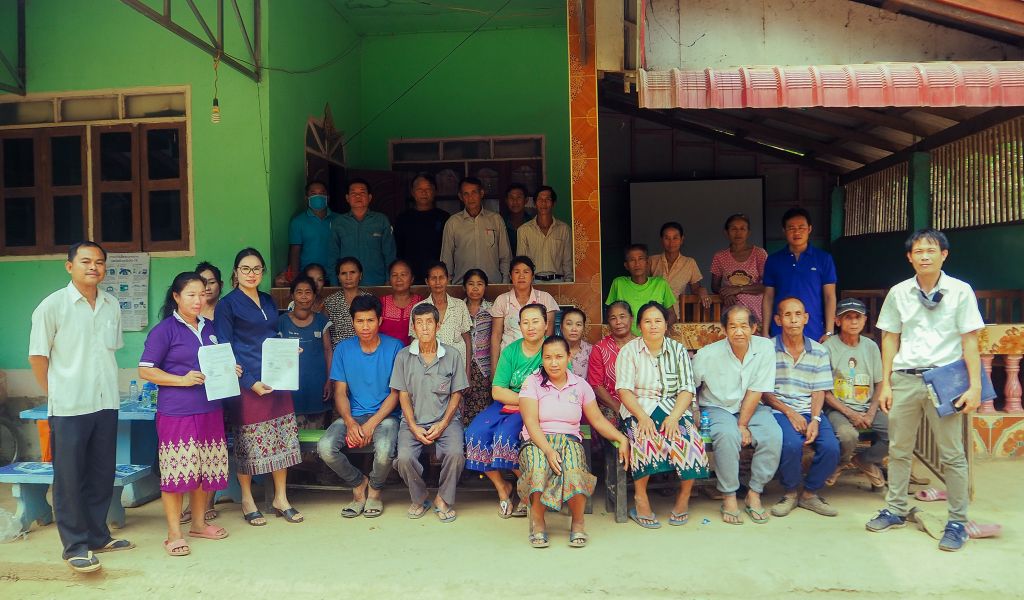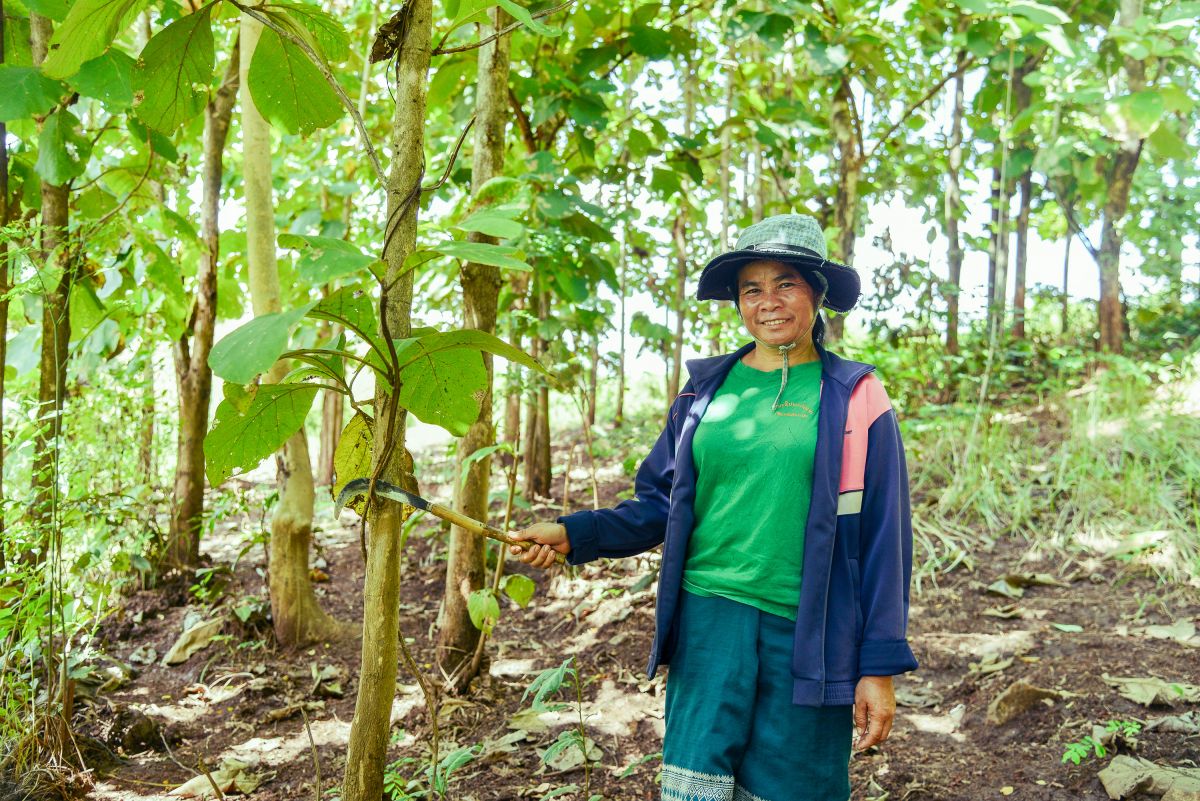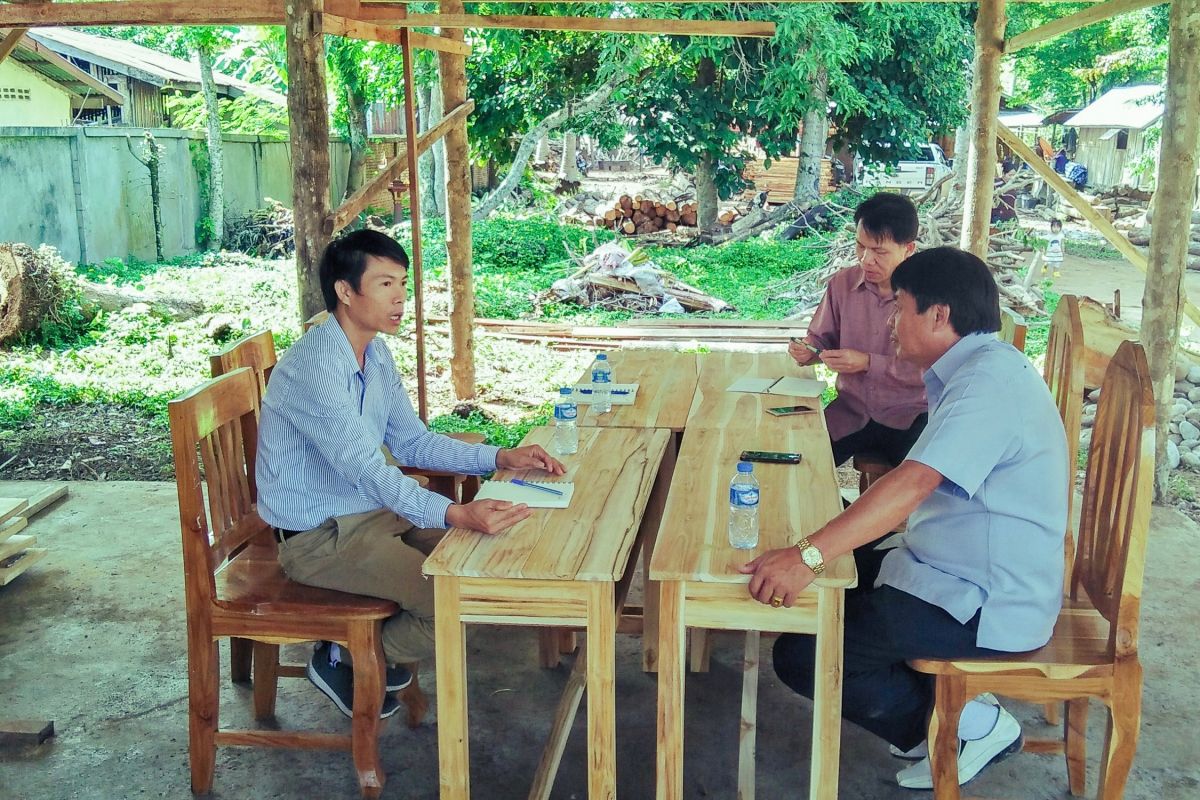Community and private sector partnerships restore forests and transform lives

Building partnerships among forest communities, the private sector and the government in Lao PDR is challenging work. Witnessing the fruit of that labour, how productive partnerships transform lives, value chains and the forest landscape, is incredibly rewarding.
Every day, I see first-hand the devastating effects of forest loss caused by agriculture, infrastructure development, dam construction and mining. As a forester and an economist, I look for sustainable solutions that can restore what we have lost and improve local livelihoods.
As field coordinator for RECOFTC in Lao PDR, my job is to help communities live and work sustainably alongside resilient and healthy forests. Increasingly, I am working to link local communities with private sector opportunities. As part of RECOFTC’s FLOURISH project, we work with communities and the private sector to generate sustainable forest products, services and commodities that will in turn help to guarantee forest protection.
Facilitating flourishing partnerships
I am particularly proud of my role in facilitating a flourishing partnership for teak production in Bokeo Province.

Three years ago, we negotiated a partnership agreement among Houaythong Village and Koklouang Village communities in Phaktha District, the Singthoun wood processing company and the local government.
The partnership is now self-sustaining because the process for developing the agreement was effective. There has been a complete turnaround in the management of the teak forest. The village communities are finally getting a fair price for their labour in the plantations. They can now afford to improve their homes, and their livelihoods are more secure.
More villagers want to get involved in the teak plantation because they see how their neighbours are benefiting. Equally, the Singthoun wood processing company is satisfied because it has a legal, sustainable and secure supply of teak.
Establishing a stable and sustainable value chain
I have found that villagers are often eager to take advantage of opportunities to better manage their forests, find buyers for their sustainable forest products and improve their livelihoods. Above all, they need a fair price and stable market for their products. But they are limited by their inability to connect constructively with private sector companies. At the same time, businesses are looking for reliable supply chains for teak, acacia, bamboo, spices and herbs.

Forging a formal partnership agreement among communities, the private sector and government partners can establish a stable and sustainable value chain. Private sector partners gain a steady supply of goods, while the communities feel secure that their products will be purchased at a fair price. And the government benefits from improvements in the value chain, increased transparency and regenerated forests.
The government wants to improve its policies regarding private sector engagement. It has established ambitious plans to achieve 70 percent forest cover in the country by 2025, which is an increase of about 30 percent from now. Government officials are aware that this will not be attainable without successful partnerships with the private sector.
Building bridges and breaking barriers
My goal is to help to build relationships of trust, transparency and mutual benefit among communities, the private sector and the government to also benefit the fourth partner—the forest landscape.
At the start of the partnership-building process, I need to build bridges. Inevitably, there is distrust and miscommunication. This needs careful navigating.

The first step is to introduce the idea of a partnership agreement with a private sector partner to a village community. Villagers are often incredulous and don’t believe it’s possible! They can be reluctant to discuss their challenges or don’t understand how arrangements could work better for them. They typically don’t trust me at first and expect that I will behave like a broker, for my personal gain.
It takes many meetings to get to a point where villagers understand and trust the process and are willing to move forward. Only then can I bring together representatives of the potential private sector and government partners and mediate their discussion.
Once partnerships are initiated, it’s my job to help drive the process forward. Reaching an agreement on the price for products is always a tough negotiation. I need to steer a process of change within the villages and the private sector businesses.
On a daily basis, I can be found meeting with family producers in the villages, liaising with partners to explore further opportunities, mediating a dispute, visiting potential private sector allies such as sawmills or viewing forest products and plantations.
My vision is for more local community and private sector partnerships in Lao PDR and beyond. To facilitate this, I wrote a practical step-by-step guide to explain the groundwork and process. My hope is to inspire others to work towards flourishing communities, thriving private sector businesses and restored forests.
###
This story was produced with the financial support of the International Climate Initiative (IKI) of Germany’s Federal Ministry for the Environment, Nature Conservation and Nuclear Safety (BMU). Its content is the sole responsibility of RECOFTC and does not necessarily reflect the views of BMU. For more information on FLOURISH visit this page.
RECOFTC's work is made possible with the continuous support of the Swiss Agency for Development and Cooperation (SDC) and the Swedish International Development Cooperation Agency (Sida).

